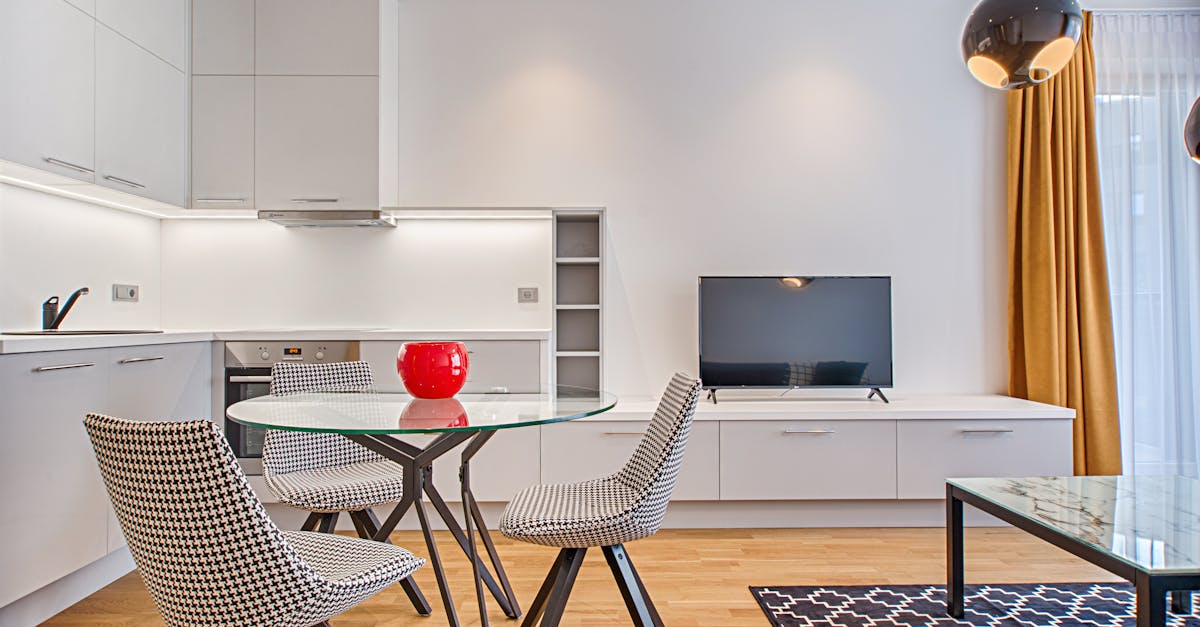
Table Of Contents
Impact of Flooring on Home Resale Value
Flooring selection plays a vital role in determining a home's resale value. Potential buyers often base their decisions on the condition and type of flooring in a house. High-quality, well-maintained flooring can significantly increase the overall appeal of a property and potentially raise its selling price. On the other hand, outdated or damaged flooring may deter buyers and lead to lower offers, impacting the final sale price.
Investing in durable and visually appealing flooring options can prove to be a wise decision for homeowners looking to increase their property value. The right flooring choice can enhance the aesthetics of a space, create a sense of luxury, and leave a lasting positive impression on potential buyers. Additionally, considering factors such as maintenance requirements, longevity, and popular trends in flooring materials can further boost a home's appeal and ultimately lead to a higher resale value.
Importance of Flooring in Home Design
When it comes to the overall design of a home, the importance of flooring cannot be overstated. Flooring serves as the foundation of a room's aesthetic appeal, setting the tone for the entire space. The right flooring selection has the ability to complement the style and decor of a room, elevating its visual appeal and creating a cohesive design scheme. In contrast, the wrong flooring choice can disrupt the balance of a space and detract from its overall look and feel.
Flooring selection is a crucial component in achieving a harmonious and well-designed home. The type of flooring chosen can significantly impact the overall ambiance of a room, influencing factors such as light reflection, room acoustics, and visual warmth. Additionally, the colour, texture, and pattern of the flooring can either enhance or clash with the existing elements in a room, such as furniture and wall colours. Therefore, careful consideration and thought should be put into selecting the most suitable flooring option to ensure that it seamlessly integrates with the overall design vision of the home.
Pros and Cons of Different Flooring Types
When it comes to flooring selection, homeowners have a multitude of options to choose from. Hardwood flooring is favored for its classic and timeless look, adding warmth and elegance to any space. It is also highly durable and can be refinished multiple times, extending its lifespan. On the other hand, hardwood flooring can be a significant investment and may be prone to scratches and water damage if not properly maintained.
Laminate flooring is a cost-effective alternative to hardwood, offering a similar aesthetic at a fraction of the price. It is easy to install and maintain, making it a popular choice for busy households. However, laminate flooring may not add as much value to a home as hardwood, and it can be more prone to water damage, limiting its use in areas with high moisture levels.
Strengths and Weaknesses of Tile Flooring
Tile flooring is a popular choice for many homeowners due to its durability and low maintenance requirements. Tiles are known for their resilience against wear and tear, making them suitable for high-traffic areas in homes. They are also resistant to moisture, making them an ideal option for bathrooms and kitchens where spills are common. Additionally, tile flooring offers a wide range of design options, allowing homeowners to customize their spaces with various colours, patterns, and sizes of tiles to suit their preferences.
Despite its many strengths, tile flooring also comes with some drawbacks. One of the main disadvantages of tile flooring is that it can be cold underfoot, especially during winter months. Additionally, the installation process for tile flooring can be labour-intensive and costly, particularly if professional installation is required. Furthermore, tile floors can be slippery when wet, posing a potential safety hazard, especially in areas prone to frequent spills. When considering Flooring Selection, homeowners should weigh the benefits and drawbacks of tile flooring to determine if it is the right choice for their living space.
Best Flooring for HighTraffic Areas
When it comes to high-traffic areas in homes, the choice of flooring is crucial. The selected flooring should be durable enough to withstand frequent usage without showing signs of wear and tear too quickly. In this regard, one of the best flooring options for high-traffic areas is engineered hardwood. Engineered hardwood offers the classic and elegant look of traditional hardwood flooring while providing increased durability and enhanced resistance to scratches and moisture.
Another excellent choice for high-traffic areas is tile flooring. Tiles are known for their strength and resilience, making them ideal for spaces that experience heavy foot traffic. Additionally, tile flooring is easy to clean and maintain, making it a practical and long-lasting option for areas like entryways, kitchens, and hallways. When considering Flooring Selection for high-traffic areas, both engineered hardwood and tile flooring stand out for their durability and practicality.
Benefits of Engineered Hardwood Flooring
Engineered hardwood flooring is an excellent choice for homeowners seeking a balance between durability and aesthetics. This type of flooring is crafted from multiple layers of wood pressed together, with a top layer that mimics the appearance of solid hardwood. One of the main advantages of engineered hardwood flooring is its resistance to moisture and temperature changes, making it suitable for areas of the house that may experience higher humidity levels, such as basements or bathrooms. This durability ensures that engineered hardwood flooring can maintain its appearance and structural integrity over time, providing long-lasting beauty to any space.
Additionally, engineered hardwood flooring offers a wide range of styles and finishes, allowing homeowners to achieve their desired look without compromising on quality. Whether you prefer a sleek modern design or a more traditional aesthetic, there is sure to be an engineered hardwood flooring option to suit your tastes. Moreover, the ease of installation for engineered hardwood flooring makes it a convenient choice for those looking to renovate or upgrade their flooring. With its combination of durability, versatility, and easy maintenance, engineered hardwood flooring is a solid investment for any homeowner looking to elevate their space with a timeless flooring selection.
FAQS
What are the most popular types of flooring in new homes?
The most popular types of flooring in new homes include hardwood, laminate, vinyl, and tile.
How does the choice of flooring impact the resale value of a home?
The choice of flooring can significantly impact the resale value of a home. High-quality flooring such as hardwood or engineered hardwood can increase the resale value, while outdated or damaged flooring can decrease it.
What should homeowners consider when selecting flooring for their new home design?
Homeowners should consider factors such as durability, style, maintenance requirements, and budget when selecting flooring for their new home design.
What are the pros and cons of different types of flooring?
Different types of flooring have their own pros and cons. For example, hardwood flooring is durable and adds value to a home but can be expensive, while vinyl flooring is affordable and easy to maintain but may not be as durable.
Which type of flooring is best for high-traffic areas in a home?
Hardwood, laminate, and engineered hardwood are good options for high-traffic areas in a home as they are durable and can withstand heavy foot traffic.
What are the benefits of choosing engineered hardwood flooring for a new home?
Engineered hardwood flooring offers the beauty of real wood with added durability, making it a great choice for new homes. It is also more resistant to moisture and temperature changes compared to solid hardwood.






